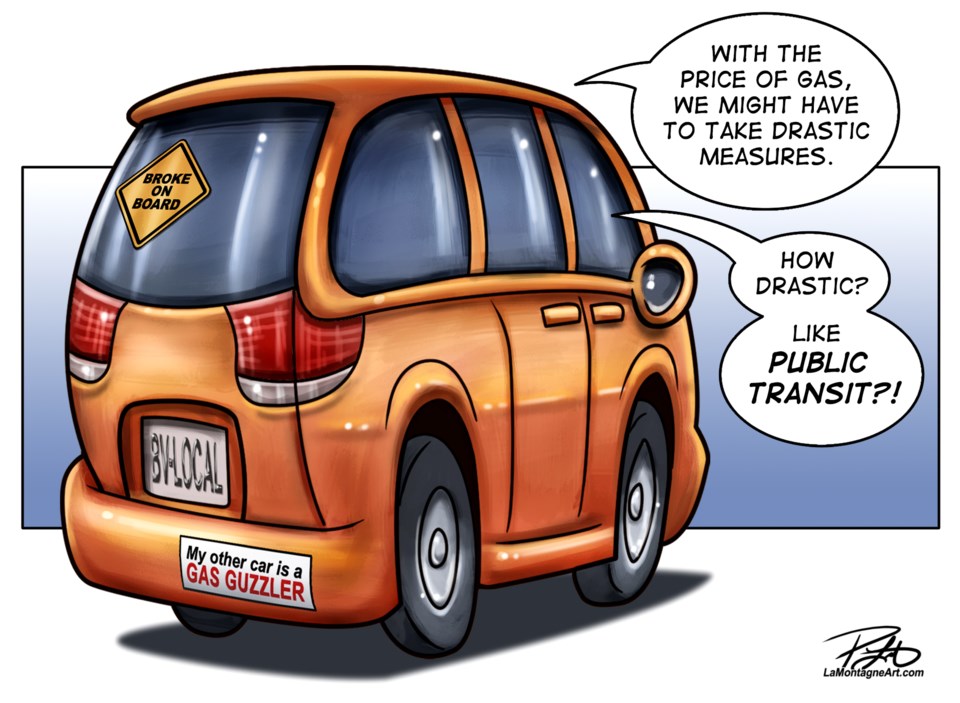It’s the same tune played repeatedly.
The cost of everything from gas, housing and food has skyrocketed at levels nearly unattainable for the average person to keep up with.
While it may seem like the Bow Valley is isolated in the affordability crisis, it’s not alone.
From coast-to-coast, communities are faced with the same issues.
And with little in the realm of its control, municipalities have prioritized certain aspects to make life more affordable for residents and visitors.
Locally, a priority has been placed on public transit.
In a short time, Roam transit has gone from being an upstart to a leader in transit options.
In 2019, Roam had a record 1.5 million riders, but that plummeted to about 560,000 riders in 2020 due to the COVID-19 pandemic. But it has once again increased, and in certain cases, surpassed the ridership level from 2019 on some routes.
Investments from the federal and provincial governments will see Roam’s fleet be comprised of about 30 per cent electric by 2023 and infrastructure repairs at the Grassi Lakes day-use areas will have a new bus route by 2024.
The Town of Canmore is also continuing improvement of its transit network – this year being the West Bow River pathway – to provide non-vehicle options to get to destinations.
Banff will also soon see fare-free transit on Roam for residents and the Town’s abundance of intercept parking at the train station also allows people to park and walk, but they’re more than welcome to drive an extra 100 metres to pay to park.
The active modes of transit policies implemented by Bow Valley communities are not without trying moments.
For those of us used to driving, it can be frustrating to not see more lanes plopped down, but owning a second vehicle is becoming a “wealthy pursuit,” as noted at Canmore’s March 15 committee of the whole meeting by Coun. Joanna McCallum.
But like so many policies, it’s not in mind to impact today but to have a positive change on tomorrow. Anyone with kids in local school divisions can likely attest to the sheer numbers of youth who choose to bike – snow or shine.
The soaring cost of gas has also led people to second guess whether they want to make that trip or find another means to get from point A to point B. The province temporarily shuttered its $0.13 per litre tax in what served as a way to help vehicle owners, but also as a public relations spin move by Premier Jason Kenney.
If the province wanted to make a significant impact, it would implement a system of rent control similar to Ontario where rents average a jump between one to three per cent each year instead of the wild west system in place in Alberta.
To address affordability, all sectors have to step up.
Employers, many of whom are facing a financial crunch, should provide workers with a sustainable income and not just look to cheaper international labour.
Municipalities have stepped up where possible – and within their legislated means – but without provincial and federal leadership doing the same, it’s putting a Band-Aid on a 10-centimetre gash and hoping for the best.
In times of need, upper levels of government have shown the strength to step up. Throwing money at an issue has shown an ability to help, but it’s not playing all the cards available on the table.
During the Second World War, the government used the War Measures Act to create the Wartime Prices and Trade Board to stop prices and wages reaching crisis levels.
The board launched a campaign to have Canadians use restraint in consumer demand, but it also faced significant pushback from farmers and businesses wanting a more open market.
The board, while rarely popular, remained in place until 1951 and made effective policies that saw the cost of living increase 2.8 per cent from 1941-45 after it had jumped 17.8 per cent from 1939-41.
If the country is going to get through the crisis, more needs to be done by everyone.




